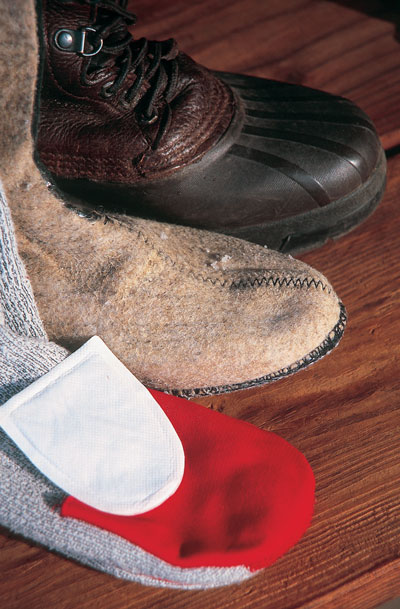 “I’m a super-avid late-season hunter,” says veteran Midwestern bowhunter Ev Terrell. “I live for late season and can handle four to five hours on a stand down at 20 below zero. I’m totally warm the entire time.”
“I’m a super-avid late-season hunter,” says veteran Midwestern bowhunter Ev Terrell. “I live for late season and can handle four to five hours on a stand down at 20 below zero. I’m totally warm the entire time.”
How does he do it? Terrell is a marketing and brand development vice president at Cabela’s, but has been divisional merchandising manager where he sold, designed, and marketed clothing. Because Cabela’s sells most fabrics and major brands, he has the big-picture perspective.
1. Avoid Sweating To The Stand
The critical element is moisture, says Terrell. “Any perspiration is a problem, and the difference between some and none is night and day. …Basically all the way to the deer stand I have as little to make me sweat as possible, including slippers from the truck to the stand.”
“Literally nothing” in the context of below-zero temperatures means long underwear (top and bottom) and slippers while driving. Once in the woods, Terrell puts his clothes and boots in a backpack. His kit including a small piece of carpeting so that he can stand in snow and dress. “If you wear pac boots and heavy clothes to your stand, you will perspire,” says Terrell. “Then you will get cold.”
He dresses about 150 yards away, sometimes closer, but never in his hunting zone or anywhere deer travel. Then he proceeds to and slowly climbs the stand to avoid sweating at all.
2. Don’t Leave Scent Behind
“More than anything else,” Terrell emphasizes, “I am a scent freak or actually an ‘intrusion freak.’ Deer cannot know you were there or they will leave or become nocturnal. It is really that simple. Staying warm is huge, and I worry about perspiring, but if you dress at your tree, you better shoot that buck that night or maybe the next because you will never see it there again. I always say that your ‘left-behind’ scent hunts your stand 24/7.”
3. Layer For Effective Hunting
Dressing in layers for cold weather is nothing new, yet choosing the proper materials can greatly increase or decrease hunting effectiveness. “The basic layer should be a moisture-wicking fabric that will carry perspiration away from your skin,” Terrell says.
“Secondly, the base layer should have a slick surface,” says Terrell. “The ability of outer layers to slide over the foundation is very important for freedom of movement. …You don’t want clothes to bind up.…”
The mid-layer or layers should provide insulation and scent elimination protection. For extreme cold, air-trapping and -buffering properties are essential. The higher the loft, the more air is trapped.
The mid-layer is ideal for wind-stopping barriers and scent-proofing. Terrell may wear a ScentBlocker or Scent-Lok suit on the outside, yet doubles up on the inside as well.
The outer shell must be soft and quiet when you draw the bow, rub the bark of a tree, or take your pack off. “Cold weather magnifies sound,” says Terrell. “I am amazed how sound travels in December. I can hear a dog bark from two miles away.” Ideal outer shells also feature big pockets for gear and air-activated warmers.
Feet and hands get cold quickly. “I never wear a pair of pac boots to a stand. You stay warm for an hour or two maximum. If your feet are dry, it’s amazing how well pacs work. If you wear the same boots back to the truck in the afternoon, you won’t realize how much moisture is created inside the boot. You can pull the liners out and feel the dampness. I walk 100 yards from the tree to avoid contaminating the site, and take it all off—almost—to keep my clothes dry.”






